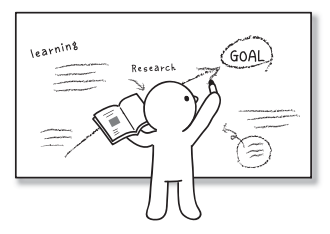Difference between revisions of "Learning Design"
Jump to navigation
Jump to search
Sfrancisco (talk | contribs) (Created patlet for pattern) |
Sfrancisco (talk | contribs) (Added contributors) |
||
| Line 4: | Line 4: | ||
{{Infobox_designpattern | {{Infobox_designpattern | ||
|image= <!-- Provide the filename of the image to be displayed (e.g., Design_pattern.png) --> | |image= <!-- Provide the filename of the image to be displayed (e.g., Design_pattern.png) --> | ||
|contributor= [[Takashi Iba]] | |contributor= [[Takashi Iba]], [[Toko Miyake]] | ||
|source= Iba & Miyake (2010)<ref>Pattern published in Iba, T., & Miyake, T. (2010). [http://dl.acm.org/citation.cfm?doid=2371736.2371742 Learning Patterns: a pattern language for creative learning II]. In ''Proceedings of the 1st Asian Conference on Pattern Languages of Programs'' (p. 4). ACM:New York.</ref>; Iba (2010)<ref>Patlet mentioned in Iba, T. (2010). [https://pdfs.semanticscholar.org/6e59/51c886e73a6efdc88f7be185d2f9336025ef.pdf Designing a Pattern Language for Creative Learners].</ref> | |source= Iba & Miyake (2010)<ref>Pattern published in Iba, T., & Miyake, T. (2010). [http://dl.acm.org/citation.cfm?doid=2371736.2371742 Learning Patterns: a pattern language for creative learning II]. In ''Proceedings of the 1st Asian Conference on Pattern Languages of Programs'' (p. 4). ACM:New York.</ref>; Iba (2010)<ref>Patlet mentioned in Iba, T. (2010). [https://pdfs.semanticscholar.org/6e59/51c886e73a6efdc88f7be185d2f9336025ef.pdf Designing a Pattern Language for Creative Learners].</ref> | ||
|dataanalysis= <!-- If applicable, list of data analyses used for mining the pattern separated by a " , "comma --> | |dataanalysis= <!-- If applicable, list of data analyses used for mining the pattern separated by a " , "comma --> | ||
Revision as of 12:39, 16 February 2017
| Learning Design | |
| Contributors | Takashi Iba, Toko Miyake |
|---|---|
| Last modification | February 16, 2017 |
| Source | Iba & Miyake (2010)[1]; Iba (2010)[2] |
| Pattern formats | OPR Alexandrian |
| Usability | |
| Learning domain | |
| Stakeholders | |
Also Known As: Design Your Learning[3]
[P] In complex and liquid society, it is inevitable to think how to learn.
[S] Learn the ‘knack’ of learning from the experienced learners, and design your way of learning based on them.
Context
Problem
Forces
Solution
Consequences
Benefits
Liabilities
Evidence
Literature
Discussion
Data
Applied evaluation
Related patterns
Example
References
- ↑ Pattern published in Iba, T., & Miyake, T. (2010). Learning Patterns: a pattern language for creative learning II. In Proceedings of the 1st Asian Conference on Pattern Languages of Programs (p. 4). ACM:New York.
- ↑ Patlet mentioned in Iba, T. (2010). Designing a Pattern Language for Creative Learners.
- ↑ Iba, T., & Sakamoto, M. (2011). Learning patterns III: a pattern language for creative learning. In Proceedings of the 18th Conference on Pattern Languages of Programs, PLoP 2011 (p. 29). ACM: New York.
